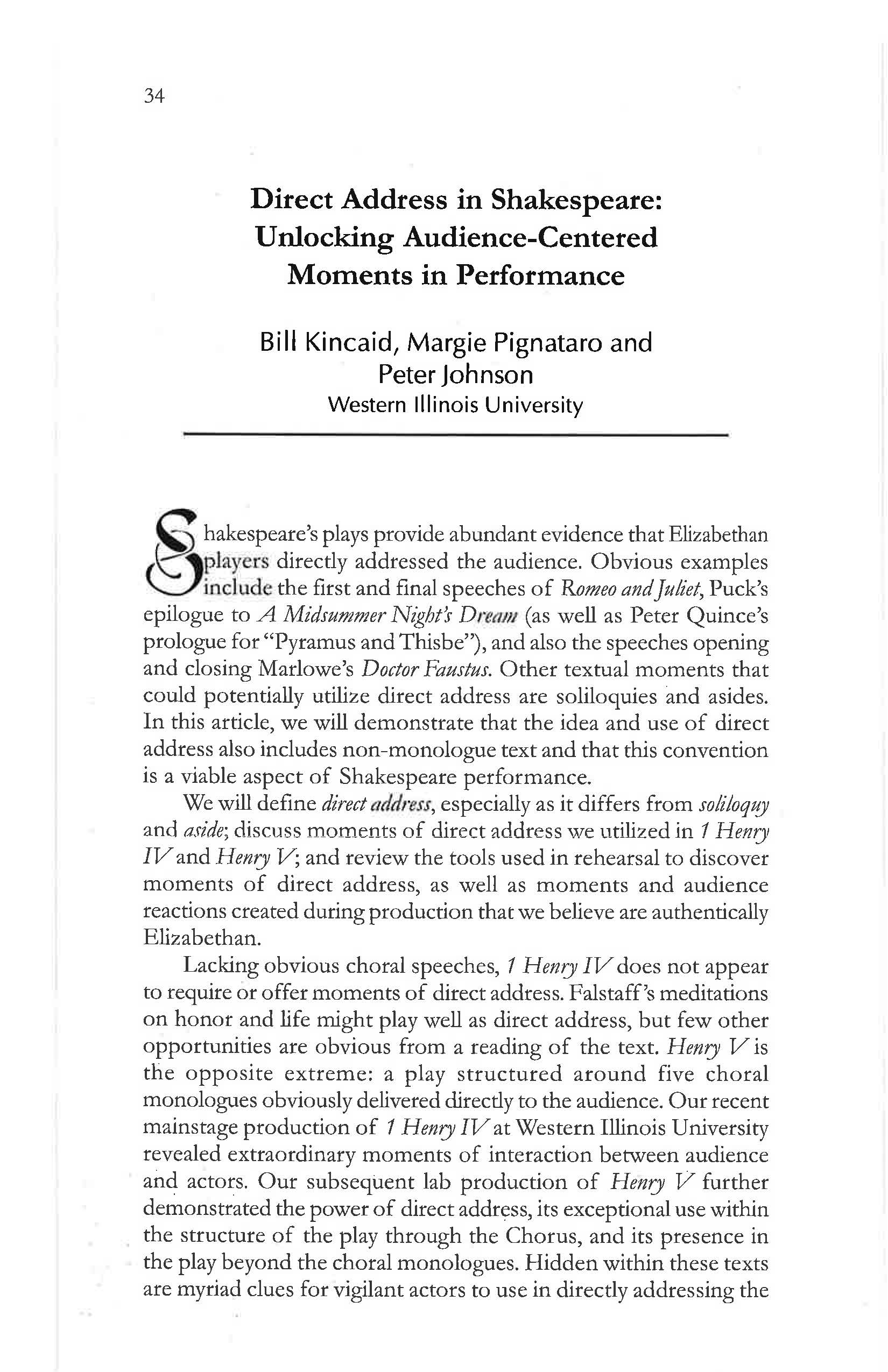Direct Address in Shakespeare: Unlocking Audience-Centered Moments in Performance
Main Article Content
Abstract
Shakespeare’s plays provide abundant evidence that Elizabethan players directly addressed the audience. Obvious examples include the first and final speeches of Romeo and Juliet, Puck’s epilogue to A Midsummer Night’s Dream (as well as Peter Quince’s prologue for “Pyramus and Thisbe”), and also the speeches opening and closing Marlowe’s Doctor Faustus. Other textual moments that could potentially utilize direct address are soliloquies and asides. In this article, we will demonstrate that the idea and use of direct address also includes non-monologue text and that this convention is a viable aspect of Shakespeare performance.
Article Details
Section
Articles
